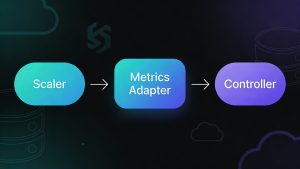User Acceptance Testing (UAT meaning) is the final phase of the software development lifecycle where the software is tested by end-users, clients, or stakeholders. It ensures that the system meets business requirements and functions as intended in real-world scenarios. Unlike functional testing or system testing, which focus on the software’s technical specifications, UAT emphasizes whether the product aligns with business goals and satisfies end-user needs.
For example, in an inventory management system, while functional testing verifies whether adding or removing inventory works correctly, UAT testing software validates whether it meets the day-to-day needs of warehouse staff, such as ease of use and accuracy of reports.
By involving actual users, UAT minimizes the risk of deploying software that may technically work but fails to meet user expectations.
What Is the Purpose of UAT?
The purpose of user acceptance testing in software testing is to confirm that:
- The software works as per the documented business requirements.
- The user interface is intuitive and functional.
- There are no major usability or performance gaps.
UAT helps organizations achieve higher levels of user satisfaction and ensures the software is ready for deployment. It’s essentially a final checkpoint to validate the product from the user’s perspective.
Who Performs UAT?
Who performs UAT? UAT is carried out by:
- End-users or business users: The primary users of the software validate whether it meets their requirements.
- Business analysts: Ensure that business objectives are achieved.
- Project stakeholders or clients: Provide final approval for software deployment.
UAT testers are usually non-technical, focusing on whether the system performs the intended business operations.
Types of User Acceptance Testing
There are different types of acceptance testing and user acceptance testing depending on the scenario:
- Alpha Testing: Conducted by internal users in a controlled environment.
- Beta Testing: Involves real users testing the system in a live environment.
- Operational Acceptance Testing (OAT): Verifies if the system is ready for deployment from an operational standpoint.
- Contract Acceptance Testing: Ensures that the software meets the agreed-upon contractual requirements.
- Regulation Acceptance Testing: Confirms that the system complies with legal and regulatory standards.
How to Perform UAT in Software
Performing UAT requires a structured approach. Here’s a step-by-step guide:
- Define Acceptance Criteria: Create clear objectives for the software that align with business requirements.
- Prepare Test Data: Ensure realistic test data is available, similar to the production environment.
- Develop UAT Test Cases: Write comprehensive test cases to simulate real-world scenarios.
- Execute Tests: Users test the software by performing tasks as per the test cases.
- Document Results: Log the results and note any deviations or bugs.
- Resolve Issues: Fix the identified issues and retest as needed.
- Obtain Approval: Once all tests pass, stakeholders approve the system for production.
Example UAT Test Case (Written in Gherkin):
gherkin
Feature: Employee Registration
Scenario: Register a new employee with valid data
Given the user is on the "Register Employee" page
When the user enters valid details (e.g., Name, Email, Job Title)
And clicks on the "Submit" button
Then a success message should be displayed
And the employee details should be added to the databaseSample UAT Script in Python:
python
import requests
# Simulate user registering an employee
def test_register_employee():
url = "https://example.com/api/register"
payload = {
"name": "John Doe",
"email": "johndoe@example.com",
"job_title": "Software Engineer"
}
response = requests.post(url, json=payload)
assert response.status_code == 201, "Employee registration failed"
assert response.json()["message"] == "Employee registered successfully"
# Execute the test case
test_register_employee()Challenges of User Acceptance Testing (UAT)
Conducting uat testing software comes with its own set of challenges:
- Inadequate User Involvement: End-users may lack time or interest in UAT.
- Ambiguous Acceptance Criteria: Poorly defined criteria lead to confusion during testing.
- Time Constraints: UAT is often squeezed into tight project schedules.
- Environment Issues: Testing in an environment that doesn’t reflect production can lead to incorrect results.
User Acceptance Testing (UAT) Prerequisites
Before starting user acceptance testing in software testing, ensure the following:
- A stable testing environment that mimics production.
- Clear and agreed-upon acceptance criteria.
- Test data that mirrors real-world scenarios.
- All major defects from previous testing phases resolved.
Tools for User Acceptance Testing
There are various tools that assist in uat testing software, such as:
- JIRA: For managing test cases, issues, and tracking progress.
- TestRail: A dedicated test management tool for organizing UAT.
- Zephyr: Integrates seamlessly with JIRA to support test management.
- Postman: Useful for testing APIs in UAT scenarios.
Example of API UAT Using Postman:
If the software includes APIs, testers can validate them using Postman.
Sample API Request:
json
POST /api/register
{
"name": "Jane Smith",
"email": "janesmith@example.com",
"password": "secure_password"
}Expected Response:
json
{
"message": "User registered successfully",
"user_id": "12345"
}UAT Best Practices
To ensure effective user acceptance testing, follow these best practices:
- Engage end-users early in the development process to gather requirements.
- Prepare realistic test cases and data for accurate validation.
- Document all findings, including minor usability concerns.
- Automate repetitive tests to save time during UAT cycles.
Exit Criteria for User Acceptance Testing
UAT is considered complete when:
- All test cases are executed successfully.
- All identified issues are resolved or documented for future fixes.
- Stakeholders approve the final version of the software.
The Importance of UAT Documentation
Documenting UAT results is crucial for maintaining transparency and tracking progress. A typical UAT report includes:
- A summary of executed test cases.
- Details of identified issues and their resolution.
- Final sign-off from stakeholders for deployment readiness.
Conclusion
What is UAT testing? User Acceptance Testing is not just the final phase of testing but a critical process that validates whether the software meets real-world needs. By involving end-users and focusing on practical use cases, UAT bridges the gap between technical implementation and business goals.
For organizations, investing time in user acceptance testing in software testing ensures that the software is both functional and user-friendly. Despite its challenges, adhering to best practices and using appropriate tools can make UAT a seamless process.
Frequently Asked Questions About UAT
When Should UAT Be Run?
UAT is conducted after system testing and just before deploying the software to production.
Who Performs UAT?
End-users, business analysts, and stakeholders perform UAT.
What Tools Are Used for UAT?
Tools like JIRA, TestRail, and Zephyr are commonly used for managing UAT.
Who Writes UAT Test Cases?
Business analysts and testers, in collaboration with stakeholders, typically write UAT test cases.



